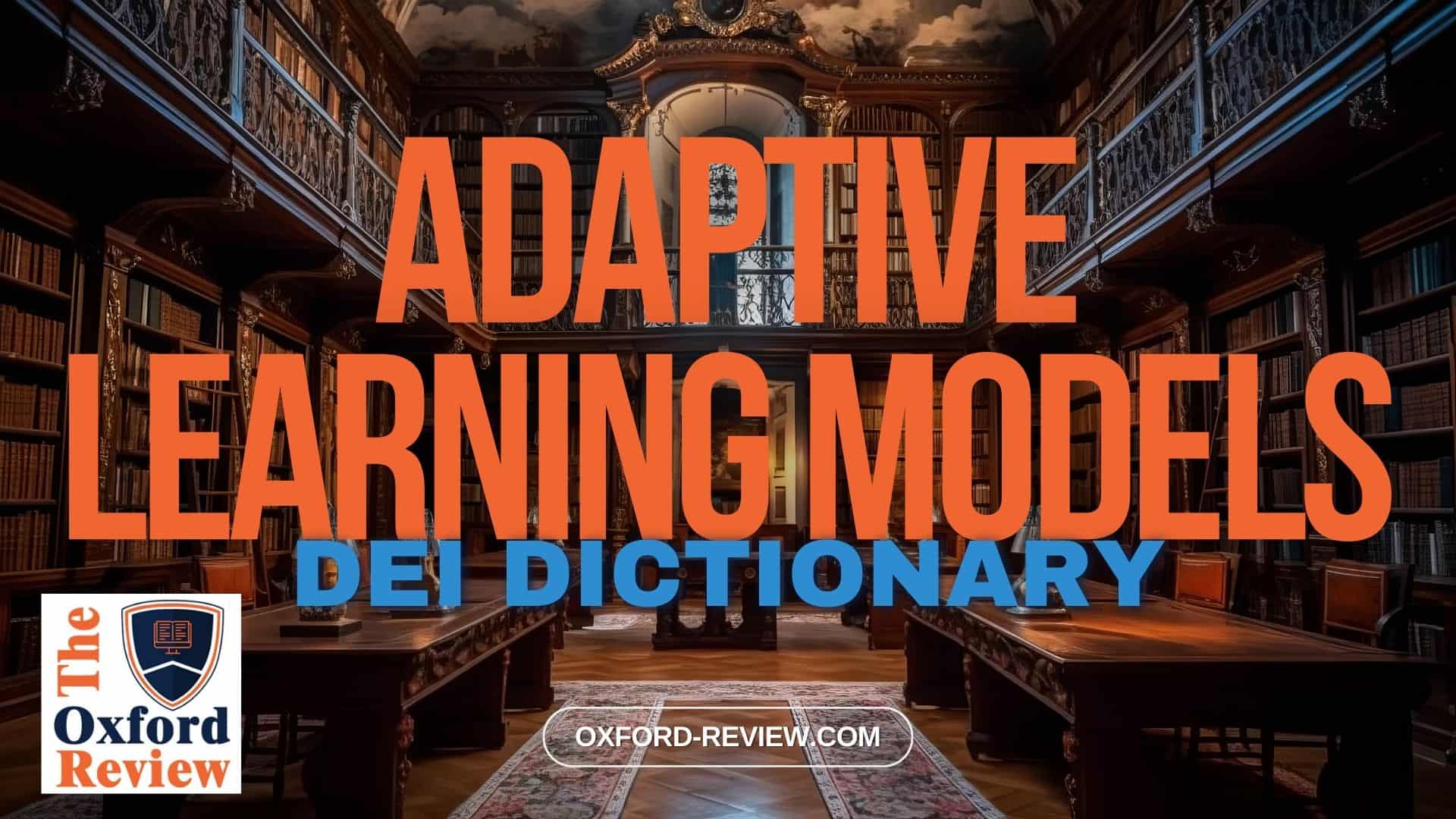Adaptive Learning Models – Definition and Explanation

Embracing Diversity and Inclusion: Understanding Adaptive Learning Models
In today’s fast-evolving landscape, promoting diversity, equity, and inclusion (DEI) is paramount for organisations aiming to succeed in a global setting. One potent tool gaining momentum in this pursuit is Adaptive Learning Models. Let’s explore what Adaptive Learning Models entail, how they function, and their pivotal role in fostering DEI.
Definition:
Adaptive Learning Models are educational systems or platforms that utilise technology to tailor learning experiences according to individual needs, preferences, and performance. These models harness algorithms and data analytics to dynamically adjust content delivery, pacing, and assessment, ensuring optimal learning outcomes for each learner.
How do Adaptive Learning Models work?
Adaptive Learning Models operate on a feedback loop mechanism. They commence by evaluating learners’ initial knowledge and skills through diagnostic tests, surveys, or interactive tasks. Using this data, the system designs a personalised learning pathway for each learner, comprising customised content, resources, and activities aligned with their unique learning goals.
As learners progress through the curriculum, the system continuously gathers data on their interactions, performance, and comprehension levels. This real-time feedback enables the Adaptive Learning Model to adapt and refine the learning pathway, ensuring that learners receive targeted interventions, remediation, or enrichment as necessary. By accommodating diverse learning styles, paces, and preferences, these models cultivate an inclusive learning environment where every individual can thrive.
Example:
An exemplary illustration of Adaptive Learning Models is evident in language learning platforms like Duolingo. Duolingo utilises machine learning algorithms to personalise language learning experiences for millions of users globally. Learners commence by taking a placement test to assess their proficiency level. Based on the results, Duolingo devises personalised lesson plans, adjusting the difficulty and content according to individual performance and progress.
Moreover, Duolingo’s Adaptive Learning Model incorporates spaced repetition techniques, ensuring that learners revisit and reinforce previously learned material at optimal intervals. This personalised approach not only enhances learning efficiency but also accommodates diverse learning paces and styles, making language learning accessible and inclusive to learners from various backgrounds.
Conclusion:
Adaptive Learning Models represent a potent tool in the realm of education and workforce development, particularly in advancing diversity, equity, and inclusion initiatives. By tailoring learning experiences to individual needs and preferences, these models empower learners to realise their full potential, irrespective of their background or circumstances. Embracing Adaptive Learning Models nurtures a culture of inclusivity and equity, paving the way for a brighter, more diverse future.
References:
Arsovic, B., & Stefanovic, N. (2020). E-learning based on the adaptive learning model: case study in Serbia. Sādhanā, 45(1), 266. https://link.springer.com/article/10.1007/s12046-020-01499-8
Be impressively well informed

Get the very latest research intelligence briefings, video research briefings, infographics and more sent direct to you as they are published
Be the most impressively well-informed and up-to-date person around...
